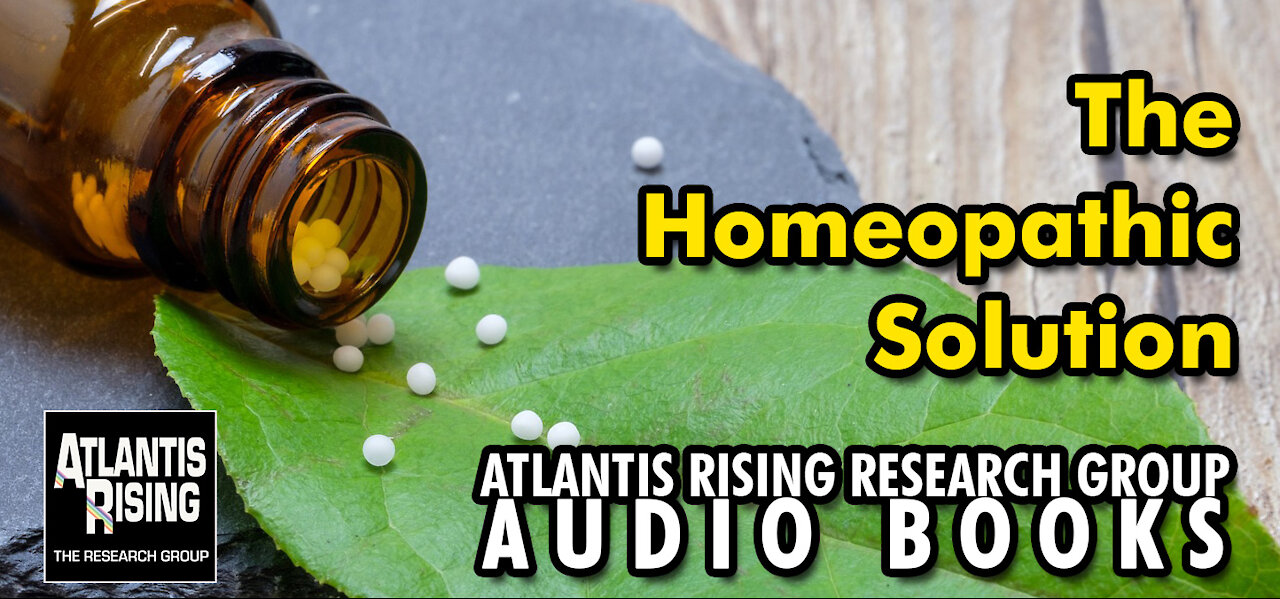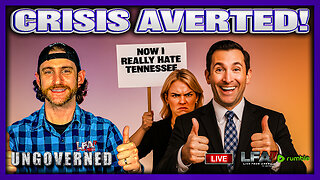Premium Only Content

The Homeopathic Solution - Atlantis Rising Research Group
Homeopathy may currently be science’s least favorite anomaly. Although many scientists and doctors are hoping homeopathy will finally go away for good, the system of alternative medicine seems to be more popular than ever. Hardened skeptics and materialists like Richard Dawkins would like to see public support and taxpayer funding of homeopathy removed, claiming it to be a pseudoscience and a dangerous enemy to reason in our culture. At the same time, homeopathy is an integral part of the healthcare systems of Germany, the United Kingdom, India, Pakistan, the United States, and Mexico. Over 6 million Americans a year use homeopathic remedies.
In the late 1700s, Samuel Hahnemann, was the first to coin the term homeopathy. Hahnemann brought together three major elements that form the core of homeopathic medicine. The first is the Law of Similars. This is the idea that a substance that causes the symptoms of a disease in healthy people will cure similar symptoms in sick people. Hahnmann wasn’t the first to subscribe to this idea. Hippocrates prescribed a small dose of mandrake root—which in larger doses can produce mania—to treat mania itself. Later, in the sixteenth century, Paracelsus declared that small doses of “what makes a man ill also cures him.”
To avoid the side effects of the substances being used, Hahnemann started diluting the substances. This is the second component of homeopathy. One dilution of a homeopathic remedy is one part to one hundred in distilled water or alcohol. This dilution is repeated between 4 and 30 times—written 4C or 30C—depending on the nature of the treatment. It is this dilution that irks most mainstream scientists, since past 12C it is mathematically unlikely that there will even be one molecule of the original compound in the remedy.
The third component in homeopathic remedies is Succussion, whereby the remedy is “dynamised” or “potentized.” To affect this step, each dilution of the remedy is vigorously shaken and the vial containing the liquid is struck sharply, on something like a thick leather book, at least 10 times. Hahnemann believed that succussion activated the “vital energy” of the substance. To this day, these three basic principles are still followed in the creation of homeopathic remedies.
Hahnemann also felt that each substance used in a remedy should go through a proving. In this practice, each compound is tested with healthy volunteers under very strict observation to discover the common symptoms for the substance, which were then used to determine what symptoms the substance would treat. Some claim that Hahnemann’s compilation of provings were the foundation of early clinical trials due to his use of control groups and his systematic, quantitative procedures. Using nitroglycerine as a treatment for angina was discovered by looking through homeopathic provings. Today homeopathic remedies are prescribed for everything from common colds and allergies to Parkinson’s, arthritis, MS, HIV, and even cancer. Homeopathic remedies have been regulated in the United States since 1938.
What upsets many scientists and doctors about homeopathic remedies is the absence of any molecules of the active substance in the solutions. With any of the higher dilutions, the remedies shouldn’t be biologically active. The mass of pharmacological research has found that stronger effects of an active ingredient come from a higher, not lower dose. Since homeopathic remedies clearly contradict the known biological mechanisms, most critics assume that any healing effect must be from the placebo effect. Some doctors even propose that administering homeopathic remedies, and placebos in general, is unethical and a cruel deception of the patient.
In 1988, the French immunologist Jacques Benveniste published a research paper that supported the principles of homeopathy in the prestigious scientific journal Nature. His research clearly showed there was a demonstrable effect for very high, homeopathic dilutions of an antibody on human basophils, a kind of white blood cell. This paper began a battle that continues to this day regarding the scientific validity of homeopathy. In his paper, Benveniste proposed a kind of “water memory” to explain his positive results, a physical interpretation of Hahnemann’s “vital energy.” At the request of Nature, Benveniste’s research was replicated successfully by four other laboratories worldwide before publication in the journal.
-
 0:19
0:19
Atlantis Rising Research Group
3 years agoJoin the ATLANTIS RISING RESEARCH GROUP!
1.36K2 -
 1:39:27
1:39:27
Graham Allen
2 hours agoTrump NUKES Biden’s Entire “Legacy” + Did Candace Implicate TPUSA In Charlie’s Death?!??
109K506 -
 LIVE
LIVE
Badlands Media
10 hours agoBadlands Daily – December 3, 2025
3,192 watching -
 LIVE
LIVE
Matt Kohrs
12 hours agoLive Day Trading, Breaking Market News & Options Analysis || Stock Market Open
600 watching -
 LIVE
LIVE
Wendy Bell Radio
6 hours agoTime To Take Out The Trash
7,498 watching -
 1:09:52
1:09:52
Chad Prather
14 hours agoHow God Turns Pressure Into Purpose
68.6K29 -
 LIVE
LIVE
LFA TV
12 hours agoLIVE & BREAKING NEWS! | WEDNESDAY 12/03/25
3,032 watching -
 1:05:24
1:05:24
Crypto Power Hour
13 hours ago $5.95 earnedVanguard Finally! XRP ETF’s
54.3K7 -
 13:40
13:40
ARFCOM News
19 hours ago $2.51 earnedHis Wife Got Cancer So They Took His Guns + DoJ's 2A Rights Division + Trump Slump Continues
35.2K15 -
 13:19
13:19
Degenerate Jay
19 hours ago $2.86 earnedThis Fallout: New Vegas Discovery Could Change Everything
37.9K